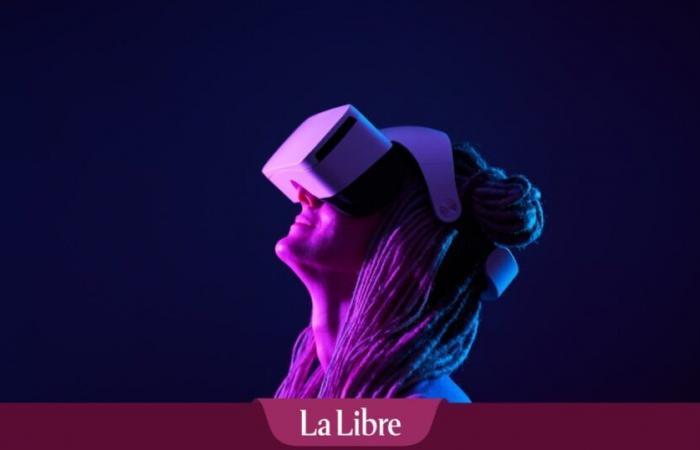“Virtual reality, now, we see it everywhere; She hides behind many more things than we imagine“, comments Hervé Verloes, co-founder of Poolpio (with Boris Walravens), a Brussels studio for creating immersive content.
The distinction between virtual reality (VR) and augmented reality (AR), regularly confused, lies in the level of immersion: VR immerses the user in an entirely virtual world in which they evolve, while AR superimposes virtual elements on reality. “It’s like a layer, a layer, that you see through the helmet”specifies Hervé Verloes. The smartphone game Pokémon Go is a classic example! But that’s not all, some projects can mix the two ( Mixed Reality) while extended reality (XR) encompasses a range of immersive technologies (AR, VR, MR). “We will sometimes, or at the same time, see the world around us, but have elements that are superimposed. And also move in universes, spaces that are not at all connected with reality. It becomes a little meta”smiles the trained journalist.
What about helmets?
Since 2015, these have become more accessible to the general public, particularly targeting gamers. We think in particular of the Meta Quest and the Sony Playstation VR or even the very expensive Apple Vision Pro, starting at 3,500 euros, intended more for professionals and industrialists and expected in Belgium for 2025. But despite these innovations, the adoption of the RV remains low in Belgium: only 2 to 4% of Belgians have one at home, notes Hervé Verloes.
You will have understood that if virtual reality is exploding today it is because it really affects a multitude of sectors, whether industrial, cinematographic, educational or cultural. And behind this sector are hidden professions, the video game and audiovisual sectors, in particular.
Post-burn-out support: “VR” to facilitate the return to work
Everywhere around us
Cinema and virtual sets
These technologies are also used in cinema. In Belgium, Magic Loom (co-founded by Poolpio) is the first virtual production and real-time animation studio. AR technologies and the Unreal video game engine make it possible to shoot film scenes in the studio, recreating exterior settings without leaving the set. “We have already worked for Disney, Netflix, Amazon… We have notably shot exterior film scenes in the studio, such as dialogue from The night drags on, which happens in the car. We also reproduced a scene that takes place in Morocco in the middle of summer for the series The amateurs, with François Damiens, here in Charleroi. Nobody sees the difference!”
Training, apprenticeship
“Virtual reality is very effective for training, because it allows you to be immersed in a specific world,” explains Hervé Verloes. As the Poolpio team works on cybersecurity training, VR can be applied to many professions and situations. “For certain professions, we need to create muscle memory. A surgeon can therefore train to transplant a lung in VR, for example.” We know that active learning is the most effective. “When we read an article, we retain on average 20% of the content; if we play it in immersion, it can rise to 80% of the content, for the same duration.”
Immersive experiences
Since Covid, immersive experiences seem to explode in the culture and entertainment sector. Confined at home, consumers have turned to 360° platforms and VR to travel and discover. Sales of VR headsets also experienced a boom during this period, observes our expert.
But today, immersion becomes a collective experience. Immersive exhibitions attract an unprecedented audience, as evidenced by the VR artist retrospectives that follow one another in Brussels and elsewhere. Van Gogh, Frida Kahlo, Monet: visitors literally immerse themselves in their works, surrounded by giant projections, before putting on a virtual reality headset to prolong the experience. The “wow” effect is guaranteed, and the marketing potential is undeniable. Even museums are getting in on the action, with permanent or temporary immersive exhibitions.
VR leisure centers are also multiplying, offering adventures, virtual escape games, and free-roaming rooms where everyone can move freely, helmet screwed on their head, without risk of collision. Theme parks are no exception to this trend, with interactive experiences that push the boundaries of reality. We feel that this is only the beginning… In a world where technology redefines our ways of living, entertaining and feeling every day, who knows where the next immersive adventures will take us?






